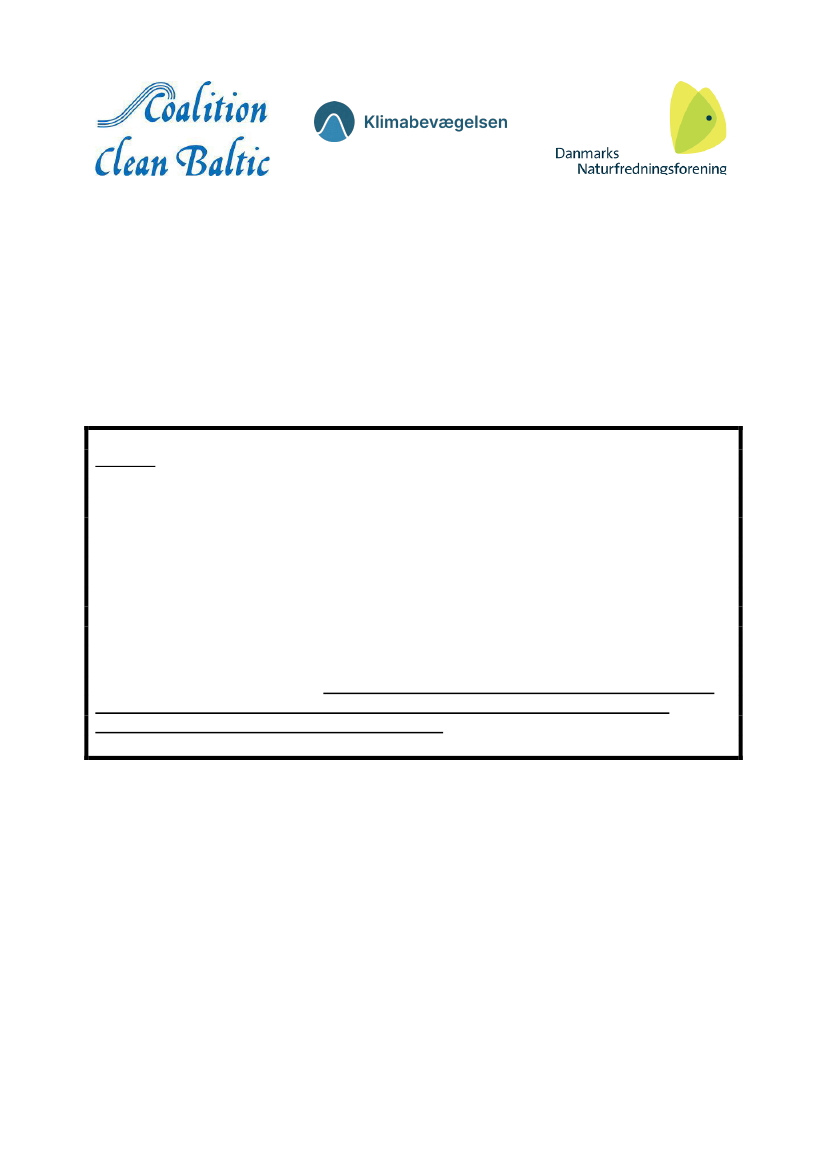
DocuSign Envelope ID: BD55269F-2842-4191-AD9D-7EC89494154D
0B894DA5-E249-4194-94EC-D12E78B98E63
Transportudvalget 2021-22
TRU Alm.del - Bilag 351
Offentligt
To the European Commission
To the Members of the European Parliament
To the Danish Parliament
To Whom It May Concern
June 2022
This concerns Denmark’s change of practice on permitted changes to the
flow of water into the Baltic Sea and the lack of Espoo hearings on the
construction of the Lynetteholm project
Summary
Denmark is firmly grounded on the principle of ensuring that construction projects and
infrastructure must not affect the flow of water into the Baltic Sea (the “zero solution principle”).
However, the Danish authorities have now allowed that a new artificial peninsula in the Sound – the
Lynetteholm project – may block the flow of water into the Baltic Sea by up to 0.5%. This marks
the adoption of a new practice.
We consider that blocking of up to 0.5% as a result of the Lynetteholm project could, in itself, have
significant, irreversible, negative environmental consequences for the Baltic Sea. If the same
blocking is now accepted for other construction projects in the future, the environmental impact on
the marine environment could have unpredictable consequences.
By this request, we seek support to stop the risk of man-made environmental disasters resulting
from the Lynetteholm project on the Baltic Sea by stressing the need to uphold the “zero
solution” principle for marine environmental impact.
Denmark’s geographic location brings with it a special responsibility for safeguarding the aquatic
environment of the Baltic Sea. Small changes in water flow can affect the whole Baltic Sea and all
the Baltic Sea countries. This is a responsibility that Denmark has so far fully met. Regardless of
costs, Denmark has insisted on the fundamental principle in international law and
intergovernmental relations that states must ensure that activities within their jurisdiction do not
cause damage to the environment of other states.
1
Thus, it has been considered a firm principle that
Denmark’s major infrastructure projects should not affect water flow and thereby create a risk of
man-made environmental disasters in the Baltic Sea. In Denmark, this is referred to as a “zero
solution”
principle. The zero solution has consistently been upheld for:
-
-
-
construction of the Great Belt Link in the 80’s;
construction of the Øresund Fixed Link in the 90’s; and
construction of the ongoing Fehmarn Belt Fixed Link project.
1/4